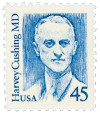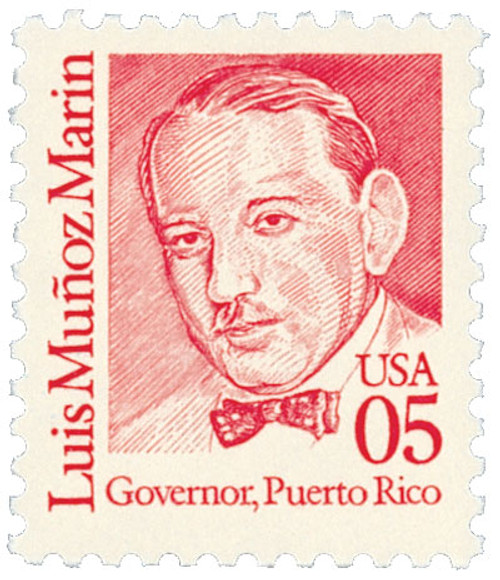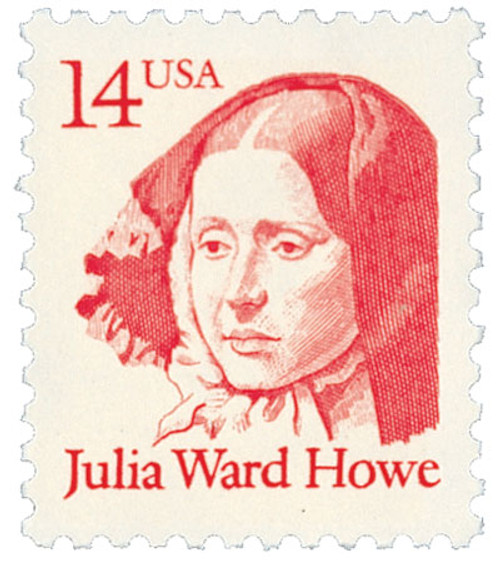
# 2188 - 1988 45c Great Americans: Harvey Cushing, M.D.
U.S. #2188
1988 45¢ Harvey Cushing, M.D.
Great Americans
- Honors the “father of neurosurgery”
- 41st stamp in the Great Americans Series
- Paid two different rates – first-class two-ounce rate and international airmail rate
Stamp Category: Definitive
Series: Great Americans
Value: 45¢, paid the new first-class two-ounce rate and the international airmail rate
First Day of Issue: June 17, 1988
First Day City: Cleveland, Ohio
Quantity Issued: 272,300,000
Printed by: Bureau of Engraving and Printing
Printing Method: Engraved
Format: Panes of 100 in sheets of 800
Perforations: 11.2 x 11.1
Color: Bright blue
Why the stamp was issued: This stamp paid the new first-class two-ounce rate, replacing the 1985 39¢ Grenville Clark stamp. The stamp also paid the new international airmail rate. First Lady Nancy Reagan was among a large number of voices calling for a stamp honoring Dr. Cushing. The first lady’s father, also a neurosurgeon, had been a volunteer assistant under Dr. Cushing in 1923 and 1924.
About the stamp design: Bradbury Thompson based his stamp portrait on a 1924 charcoal drawing by John Singer Sargent. The design was originally unveiled on Cushing’s birthday in a ceremony at the White House led by President Ronald Reagan, with Mrs. Reagan in attendance.
First Day City: The First Day ceremony for this stamp was held at the Amasa Stone Chapel of Case Western Reserve University in Cleveland, Ohio – Cushing’s hometown.
About the Great Americans Series: The Great Americans Series was created to replace the Americana Series. The new series would be characterized by a standard definitive size, simple design, and monochromatic colors.
This simple design included a portrait, “USA,” the denomination, the person’s name, and in some cases, their occupation or reason for recognition. The first stamp in the new series was issued on December 27, 1980. It honored Sequoyah and fulfilled the new international postcard rate that would go into effect in January 1981.
The Great Americans Series would honor a wider range of people than the previous Prominent Americans and Liberty Series. While those series mainly honored presidents and politicians, the Great Americans Series featured people from many fields and ethnicities. They were individuals who were leaders in education, the military, literature, the arts, and human and civil rights. Plus, while the previous series only honored a few women, the Great Americans featured 15 women. This was also the first definitive series to honor Native Americans, with five stamps.
The Bureau of Engraving and Printing (BEP) produced most of the stamps, but private firms printed some. Several stamps saw multiple printings. The result was many different varieties, with tagging being the key to understanding them. Though there were also differences in perforations, gum, paper, and ink color.
The final stamp in the series was issued on July 17, 1999, honoring Justin S. Morrill. Spanning 20 years, the Great Americans was the longest-running US definitive series. It was also the largest series of face-different stamps, with a total of 63.
Click here for all the individual stamps and click here for the complete series.
History the stamp represents: Dr. Harvey Cushing spent several years in Baltimore early in his career. He completed his residency in surgery at Johns Hopkins Hospital, opened a private practice there, and became an associate professor of surgery at Johns Hopkins. He was the first American to concentrate entirely in neurosurgery and devoted himself to reducing the hazards of brain operations. With new developments and improvements in old methods, he was able to attack many inoperable cases. During his career, he reduced the mortality rate of brain surgery from nearly 100% to 8.4%.
U.S. #2188
1988 45¢ Harvey Cushing, M.D.
Great Americans
- Honors the “father of neurosurgery”
- 41st stamp in the Great Americans Series
- Paid two different rates – first-class two-ounce rate and international airmail rate
Stamp Category: Definitive
Series: Great Americans
Value: 45¢, paid the new first-class two-ounce rate and the international airmail rate
First Day of Issue: June 17, 1988
First Day City: Cleveland, Ohio
Quantity Issued: 272,300,000
Printed by: Bureau of Engraving and Printing
Printing Method: Engraved
Format: Panes of 100 in sheets of 800
Perforations: 11.2 x 11.1
Color: Bright blue
Why the stamp was issued: This stamp paid the new first-class two-ounce rate, replacing the 1985 39¢ Grenville Clark stamp. The stamp also paid the new international airmail rate. First Lady Nancy Reagan was among a large number of voices calling for a stamp honoring Dr. Cushing. The first lady’s father, also a neurosurgeon, had been a volunteer assistant under Dr. Cushing in 1923 and 1924.
About the stamp design: Bradbury Thompson based his stamp portrait on a 1924 charcoal drawing by John Singer Sargent. The design was originally unveiled on Cushing’s birthday in a ceremony at the White House led by President Ronald Reagan, with Mrs. Reagan in attendance.
First Day City: The First Day ceremony for this stamp was held at the Amasa Stone Chapel of Case Western Reserve University in Cleveland, Ohio – Cushing’s hometown.
About the Great Americans Series: The Great Americans Series was created to replace the Americana Series. The new series would be characterized by a standard definitive size, simple design, and monochromatic colors.
This simple design included a portrait, “USA,” the denomination, the person’s name, and in some cases, their occupation or reason for recognition. The first stamp in the new series was issued on December 27, 1980. It honored Sequoyah and fulfilled the new international postcard rate that would go into effect in January 1981.
The Great Americans Series would honor a wider range of people than the previous Prominent Americans and Liberty Series. While those series mainly honored presidents and politicians, the Great Americans Series featured people from many fields and ethnicities. They were individuals who were leaders in education, the military, literature, the arts, and human and civil rights. Plus, while the previous series only honored a few women, the Great Americans featured 15 women. This was also the first definitive series to honor Native Americans, with five stamps.
The Bureau of Engraving and Printing (BEP) produced most of the stamps, but private firms printed some. Several stamps saw multiple printings. The result was many different varieties, with tagging being the key to understanding them. Though there were also differences in perforations, gum, paper, and ink color.
The final stamp in the series was issued on July 17, 1999, honoring Justin S. Morrill. Spanning 20 years, the Great Americans was the longest-running US definitive series. It was also the largest series of face-different stamps, with a total of 63.
Click here for all the individual stamps and click here for the complete series.
History the stamp represents: Dr. Harvey Cushing spent several years in Baltimore early in his career. He completed his residency in surgery at Johns Hopkins Hospital, opened a private practice there, and became an associate professor of surgery at Johns Hopkins. He was the first American to concentrate entirely in neurosurgery and devoted himself to reducing the hazards of brain operations. With new developments and improvements in old methods, he was able to attack many inoperable cases. During his career, he reduced the mortality rate of brain surgery from nearly 100% to 8.4%.






















